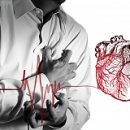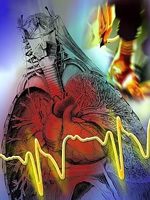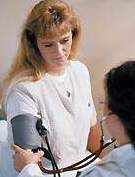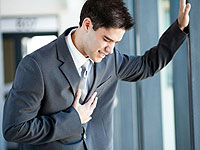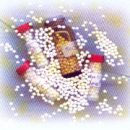Myocarditis in children can be observed in many infectious diseases. The treatment of myocarditis in children in a hospital with the use of modern drugs has a favorable forecast. Article today about this.
Content
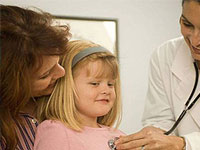 Myocarditis — Pathological state characterized by inflammatory process in myocardium with necrosis and possible degenerative changes in cardiomyocytes. The occurrence of myocarditis in children is noted in infectious diseases, more often in viral infections, when a phase is preceded with bright symptoms of intoxication. Cardiac muscle is especially sensitive to enterovirus, adenoviruses, flu virus, polio, hepatitis, cytomegalovirus, cokesaws in and others. Modern scientists note that about 5% of patients with acute viral infection may have a misfortune of myocardium as complications.
Myocarditis — Pathological state characterized by inflammatory process in myocardium with necrosis and possible degenerative changes in cardiomyocytes. The occurrence of myocarditis in children is noted in infectious diseases, more often in viral infections, when a phase is preceded with bright symptoms of intoxication. Cardiac muscle is especially sensitive to enterovirus, adenoviruses, flu virus, polio, hepatitis, cytomegalovirus, cokesaws in and others. Modern scientists note that about 5% of patients with acute viral infection may have a misfortune of myocardium as complications.
Inflammation of the heart muscle sometimes proceeds without visible symptoms and is found only at ECG, radiological or other types of research. Characteristic are complaints of pain in the heart, weakness, fatigue and shortness of breath, heartbeat under exercise, the temperature remains normal or slightly increased. The leading role in the development of this pathological process is given to allergies and impairment of immunity, when myocarditis occurs due to the increased sensitivity of the muscles of the heart to some substances, serums and vaccines. Depending on the cause distinguish:
- rheumatic;
- infectious, in particular viral and bacterial;
- allergic;
- idiopathic;
- for diseases of the connective tissue;
- After injury, burns and ionizing radiation.
Types of myocarditis hearts in children
By the course of the disease myocarditis of the heart in childhood happens:
- spicy;
- subacute;
- chronic;
- Recurrent.
The acute form of the disease is manifested by the lack of appetite, night moans and anxiety, attacks of cyanosis and shortness of breath. The subacute and chronic course of the disease have the following symptoms: an increase in the liver, a tendency to faint, vomiting, cyanosis, heart hump in the chest, breathing. The classification distinguishes the focal and common form of myocarditis, in which laboratory varieties are:
- lymphocyte version — develops with viral infection;
- neutrophyl — with bacterial lesion;
- Eosinophilic — In the presence of parasitic invasions and after receiving some drugs.
Bacterial myocarditis in children begins on the background of acute or after infection with infection in the chest, common malaise, heartbeat, interruptions in the work of the heart. There is a violation of the rhythm of abbreviations, an increase in heart size, the development of heart failure is possible. Inflammation of cardiomyocets begins with an infectious-toxic form, gradually moving into an infectious allergic version.
For its origin myocarditis in a child can be:
- congenital when the disease is already determined from birth and is expressed by weakness, lethargy, pallor, poor appetite, the expansion of the heart boundaries;
- acquired.
Basic principles of myocarditis treatment in children
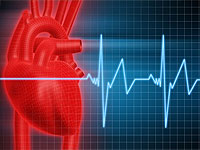 The specific diagnosis of this disease does not exist, there are no clear symptoms, on the basis of which the accurate diagnosis is possible. The presence of signs of acute infectious disease and symptoms of pathology in myocardium, taking into account the results of the ECG, ECCG, the chest x-ray, analyzing the smears from the oz, serological tests allow diagnosing inflammation of myocardium in kids and schoolchildren.
The specific diagnosis of this disease does not exist, there are no clear symptoms, on the basis of which the accurate diagnosis is possible. The presence of signs of acute infectious disease and symptoms of pathology in myocardium, taking into account the results of the ECG, ECCG, the chest x-ray, analyzing the smears from the oz, serological tests allow diagnosing inflammation of myocardium in kids and schoolchildren.
Treatment includes compulsory hospitalization, bedding, complete restriction of physical activity, drug therapy, depending on the main disease and the variant of the heart activity.
To prevent the development of acute myocarditis, it is necessary to strict adherence to anti-epidemic measures during the outbreak of viral infection: mandatory insulation of the patient, airing the room and the use of disinfected funds, the use of antiviral drugs, the sanitation of chronic infection, the correction of allergic diseases, compliance with the schedule and the prophylactic vaccination regime. The forecast for life is depending on the severity of the disease, with septic and diphtheria myocardis — unfavorable, with asymptomatic flow and timely treatment — Usually ends with recovery.

